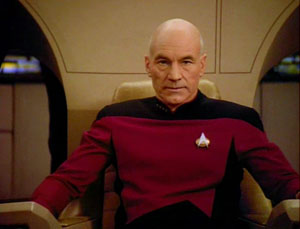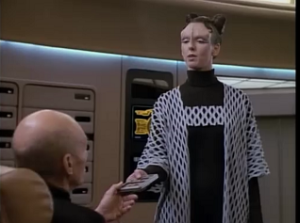More than once in a while Turner Classic Movies airs a movie that I just cannot believe I’ve gone so long without seeing! All About Eve is one of these movies. For me it is essentially the oldest “someone is out to take over my life” plot-line movie I have ever seen. A plot that has been borrowed for many films and TV shows alike. In addition to this, the movie provides many examples of different types of film elements that blend to create a captivating story. The film’s genre falls somewhere between a film noir and a melodrama and moves from the beginning of the film, where the viewer almost pities the hard life Eve has had and roots for her to get her big break in acting, to the end of the film, where Eve has shown her true evil nature and the plot turns to one of betrayal.
The film’s opening scene opens at a banquet in which all the guest are seated listening to a man give a speech about who they are all honoring that night. The film uses a reflexive style in that the opening scene is shown with what seems like a formal narrator doing a voice in which he speaks directly to the viewer. The narrator literally states “it is important you know where you are and why you are here;” this act of speaking directly to the viewer draws attention to the fact that they are watching a fictional film.
The film is similar to Citizen Kane in that it uses flashbacks from the point of view of multiple characters, but surprisingly none from the point of view of the title character. Eve never contributes her own flashbacks; the only time her past is explored is when she is being probed for information by other characters. In order to set up the flashbacks the film uses voice overs in an unconventional way in that each character whose flashback will be shown begins with their own voice over. Where All About Eve differs from Citizen Kane is that while viewing a flashback that begins from one character’s point of view, the flashback will encompass conversations and actions that the initial character was not present for. One character will initiate a voice over that fades into a flashback, but then they exit the scene and somehow the scene continues in what started out as their remembrance of the events.
While initially set up to be an innocent aspiring actress the film switches Eve’s female character role from that of the innocent female to that of a femme fatal. While all of her efforts to control men do not always work, and in the end she found out to be the conniving backstabber she is by one of the men she tried to seduce, Eve is able to manipulate those around her for the better half of the film to get the fame she has always sought.
While not intentionally stylized in this manor, the film exhibits some film noir style elements like those found in The Maltese Falcon. In addition to the use of voice overs and Eve as a potential femme fatal, the characters many times engage in witty dialogue with one another. In another style the film explores the genre of the melodrama while following Eve’s trail of deceit and lies about her past. The other main female character, Margo, experiences emotional turmoil as she starts to realize her career and possibly her romantic relationship is being endangered by Eve.
The two genres are blended together beautifully to create a film in which you find yourself identifying with one character and rooting for them at one moment, and the next moment hoping they will meet their downfall in the next scene. The acting is also wonderful in that the actors all play their parts well enough that you will begin to identify with them and try to figure out what their motivation is.





